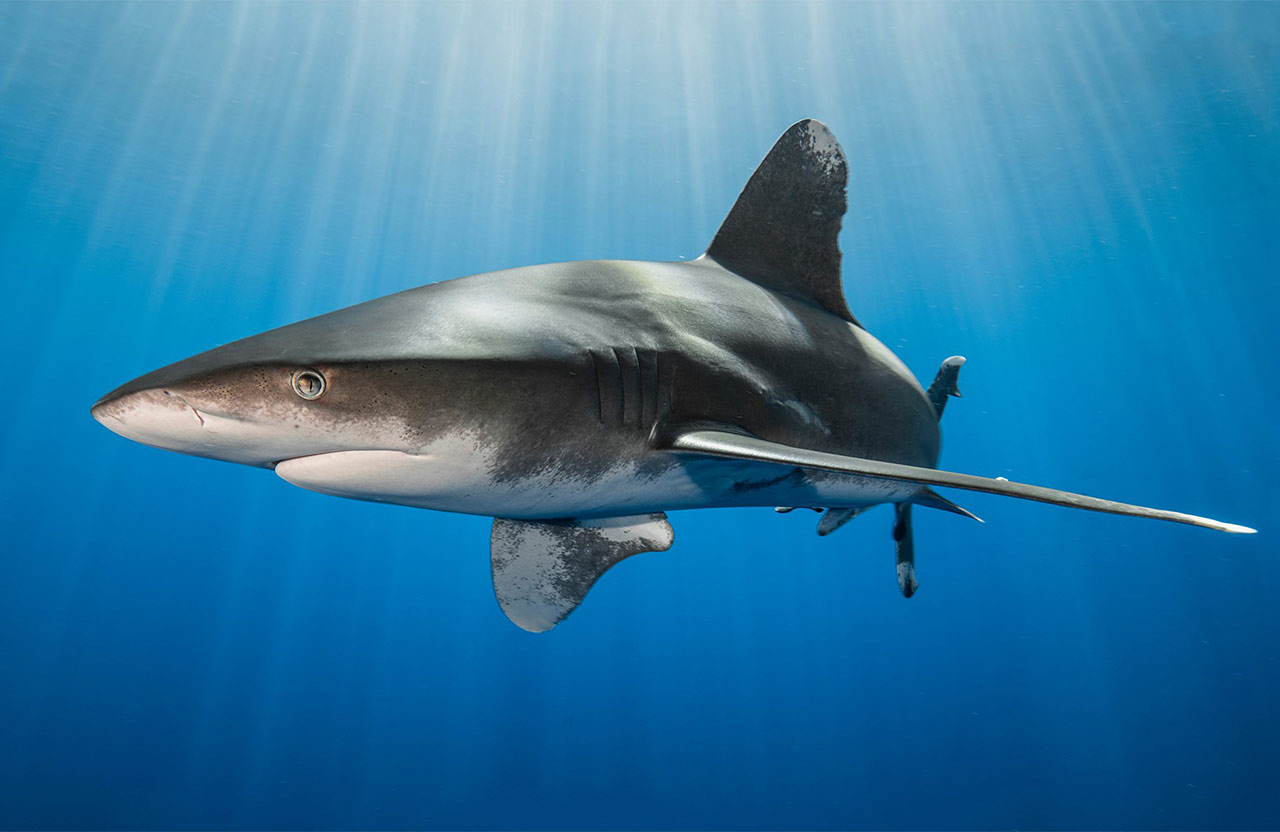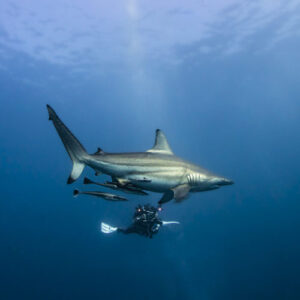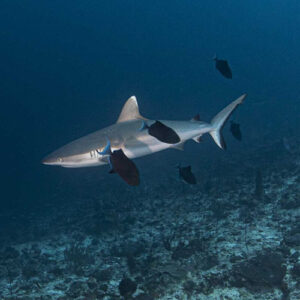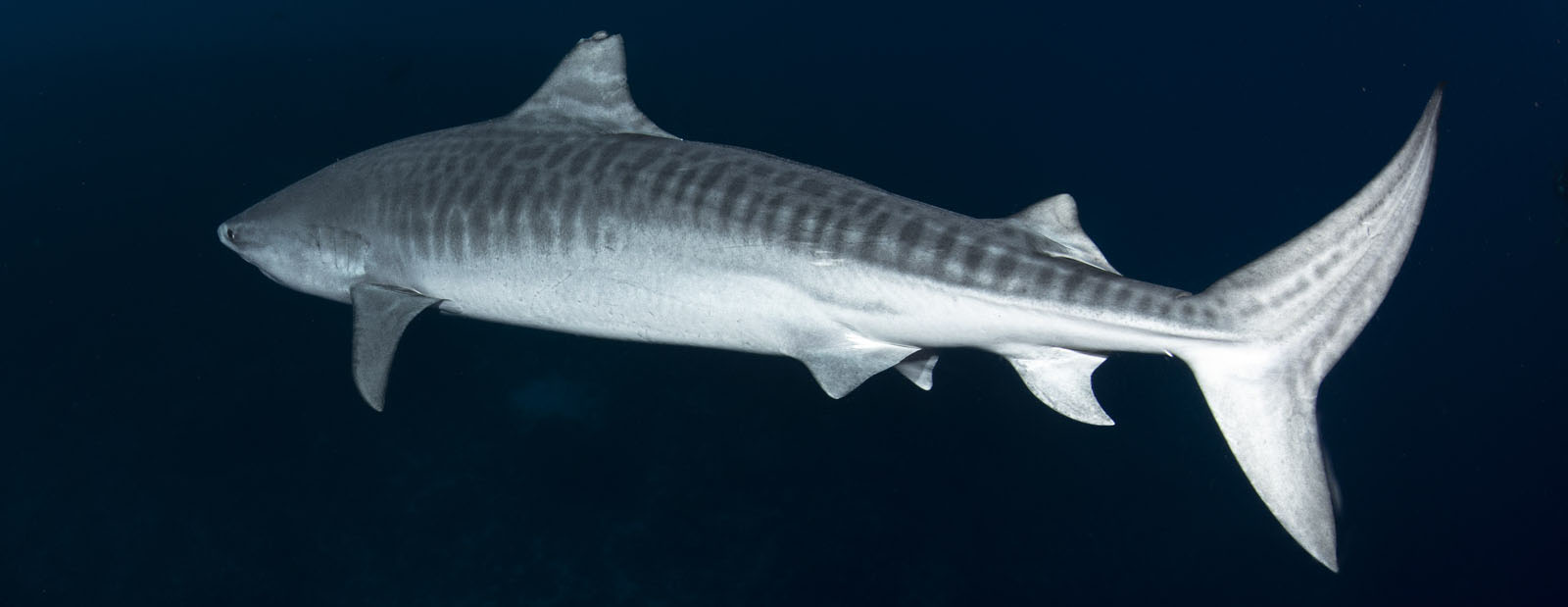Did you know that sharks existed before the dinosaurs?

Sharks are one of the oldest creatures still exist on the planet. They exist since over 450 000 000 years BC. They have a great ability of adaptation, and the evolution of survival. There are over 500 different sharks species on Earth. Some of them are already extinct and many others are sadly endangered. One of the main reasons which puts sharks into the risk group is the human impact, such as shark fishing. In most countries its illegal , but still many people do it, because sharks are being used for industrial reason and have commercial value. They use their skin, teeth, meat. Also the fins are used to make the famous and expensive shark fin soup which is still served in many countries. Also some fisherman consider shark as an enemy, because they sometimes attack tthe fishing nets.
The shark role in our ecosystem
Sharks play a very important role in the ecosystem of the ocean. They are one of the big predators in the ocean, hunting dead, sick or injured fish, because it is the easieest catch. This helps a lot to keep the ocean and ecosystem healthy.

Shark biology
The smallest shark in the world is Etmopterus perryi (17-26 cm). The biggest is the Rhincodon typus whale shark (up to 20 m). The pregnancy period of most of sharks is 11-12 months, but some species have shorter pregnancy period (6-8 months) and some other species have a pregnancy period of 3-4 years.
Shark delivery
 Sharks delivery ways are divided into three groups. The first group called oviparous sharks. They lay eggs protected by the egg case. The female shark deposits the egg cases in the see between rocks or other place to protect them from predators. The embryo is nourished by yolk in the egg sac and chews itself out when fully developed. The second group called viviparous sharks. They carry the embryos through the entire gestation period and give birth. Embryos are attached to their mother with a yolk sac placenta, which is how they receive their nutrition. In some species, females also secrete uterine milk, which provides more nutrients to the yolk sac. Viviparity is considered the most advanced method of reproduction and is practiced by bigger species, such as blue and hammerhead sharks. The most sharks are in third group – ovoviviparity. They combine the first two methods: producing eggs, but instead of hatching outside the body as in oviparity, the eggs are carried within the female for the gestation period. When the egg hatches, the shark pup continues developing inside the female until it’s born.
Sharks delivery ways are divided into three groups. The first group called oviparous sharks. They lay eggs protected by the egg case. The female shark deposits the egg cases in the see between rocks or other place to protect them from predators. The embryo is nourished by yolk in the egg sac and chews itself out when fully developed. The second group called viviparous sharks. They carry the embryos through the entire gestation period and give birth. Embryos are attached to their mother with a yolk sac placenta, which is how they receive their nutrition. In some species, females also secrete uterine milk, which provides more nutrients to the yolk sac. Viviparity is considered the most advanced method of reproduction and is practiced by bigger species, such as blue and hammerhead sharks. The most sharks are in third group – ovoviviparity. They combine the first two methods: producing eggs, but instead of hatching outside the body as in oviparity, the eggs are carried within the female for the gestation period. When the egg hatches, the shark pup continues developing inside the female until it’s born.
Shark live
Most of sharks species live around 20-30 years, but some species live longer, such as the Great White Shark (around 40-70 years). The shark with the longest life is the Greenland Shark (250-500 years).
How sharks sleep
 It is known that sharks as species never sleep, because they must move to stay alive. In order to receive life-giving oxygen from the water passing through their gilts. They actually go into the deep rest state during the day, but not really sleep like humans. Some species have the ability to lay down on the ground and stop moving and they can control their gilts to be opening and closing to let the water through for receiving the oxygen, such as the White Tip Shark or the Nurse Shark.
It is known that sharks as species never sleep, because they must move to stay alive. In order to receive life-giving oxygen from the water passing through their gilts. They actually go into the deep rest state during the day, but not really sleep like humans. Some species have the ability to lay down on the ground and stop moving and they can control their gilts to be opening and closing to let the water through for receiving the oxygen, such as the White Tip Shark or the Nurse Shark.
Shark senses
As humans, we have 5 senses, but sharks have 7 senses.
Hearing
 Hearing is the most effective sense sharks use. They can hear sounds from the distance up to a few kilometers. They have a special ability to pick up irregular sounds, especially the deep (low frequency) sounds. These sounds are the ones made by sick or injured fish, which are easy food for sharks. Also, sharks can better hear sounds in front or above them (similar to how our vision is best in front of us) which is where their food normally is. A shark’s ear is seen as a small opening (about the thickness of a texta) further back along their body from their eyes.
Hearing is the most effective sense sharks use. They can hear sounds from the distance up to a few kilometers. They have a special ability to pick up irregular sounds, especially the deep (low frequency) sounds. These sounds are the ones made by sick or injured fish, which are easy food for sharks. Also, sharks can better hear sounds in front or above them (similar to how our vision is best in front of us) which is where their food normally is. A shark’s ear is seen as a small opening (about the thickness of a texta) further back along their body from their eyes.
Smelling
It is the second sense sharks use the most, because they have an amazing sense of smell, so they can smell the injured fish or blood hundreds of meters away. Sharks smell through the water that passes through their nostrils as they swim. The most attractive smell for sharks is the fish blood, not human blood as we have seen in many movies.
Sighting
 Sharks can see about 10 times better than us in a low light conditions, such as a deep water or an early morning or sunset light, because they have tiny silvery plates, like mirrors, at the back of their eyes. These reflect light, sending it back out to be reused again. By reusing the light that enters their eyes, sharks have more light to see with. Sharks sense the contrast of the colors, but with different way than human. They can see about 20-30 m away and detect the movement about twice as fast as us.
Sharks can see about 10 times better than us in a low light conditions, such as a deep water or an early morning or sunset light, because they have tiny silvery plates, like mirrors, at the back of their eyes. These reflect light, sending it back out to be reused again. By reusing the light that enters their eyes, sharks have more light to see with. Sharks sense the contrast of the colors, but with different way than human. They can see about 20-30 m away and detect the movement about twice as fast as us.
Touching
Sharks have a distant sense of touch. They have a line that runs all the way along their body, is called literal tine. This line full of millions of tiny cells filled with jelly, and any movement in the water causes the jelly in the sense to wobble, and this wobbling passes a message onto the sharks brain and gives a distant sense of touch and enables shark to feel the fish movement from more than 100 m away.
Electroreception
 Sharks can detect the heartbeat and any electrical pulses and can sense any electromagnetic field in the water in a short distance. Pulses are detected by a network of specialized gel-filled pores in the shark’s nose called ampullae of Lorezini. It helps sharks to find they preys even if prey is berried in the send, and also to sense the changes in the water temperature.
Sharks can detect the heartbeat and any electrical pulses and can sense any electromagnetic field in the water in a short distance. Pulses are detected by a network of specialized gel-filled pores in the shark’s nose called ampullae of Lorezini. It helps sharks to find they preys even if prey is berried in the send, and also to sense the changes in the water temperature.
Sensory Pit
Formed by the overlapping of two large ‘skin teeth’ (dermal denticles – the tiny tough scales that cover the skin of sharks and rays are actually modified teeth and covered in hard enamel) scales guarding a slight depression in the skin. At the bottom of the pit is a cluster of sensory cells that resemble a taste bud. Sensory pits are found along a shark’s back, sides and lower jaw.
Taste
 Sharks have many receptors around their head, nose and mouth area. And usually if they are not sure of what they are going to bite, mostly they touch it with the tip of their head (ampullae of Lorenzini) to sense it first if it’s something good to bite or not, and if they decide to bite. Mostly the first bite is a test bite to identify if the object is good enough to eat, and if not, they leave it.
Sharks have many receptors around their head, nose and mouth area. And usually if they are not sure of what they are going to bite, mostly they touch it with the tip of their head (ampullae of Lorenzini) to sense it first if it’s something good to bite or not, and if they decide to bite. Mostly the first bite is a test bite to identify if the object is good enough to eat, and if not, they leave it.
Sharks have a test buds inside their mouths. These taste buds have not been studied extensively. Taste may be responsible for a shark’s final acceptance or rejection of prey items. It’s noted that different sharks prefer different types of food, and the good news is that human is not included their favorite food.

If you are interested to learn more about sharks, stay tuned and wait for our next blog. We will also answer one of the most common question “How to act and react when encountering a shark underwater?” and “Which shark types are the most dangerous?”.
Text: Nina Lyner, Indeep Liveaboard, Marketing & Communications
Pictures: Eslam Basuny, photographer & friend / various
2 Comments
Comments are closed.

Amazing blog!👌🦈
thank you :-)